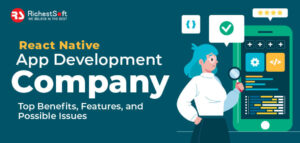In today’s mobile-driven world, cross-platform app development has become an essential skill for maximizing reach and user engagement. By creating versatile applications that work seamlessly across multiple platforms, developers can streamline their efforts and enhance the overall user experience. This article explores the advantages, best practices, and essential tools involved in mastering the art of cross-platform app development.
Understanding the Advantages
Developing cross-platform apps offers numerous benefits:
- Wider reach: By targeting multiple platforms (Android, iOS, and Windows), a single cross-platform app can effectively reach a larger audience than an app designed for a single platform.
- Cost-effective: Rather than maintaining separate teams and coding for each platform, a single codebase can be used to create apps for all platforms. This results in reduced development time, cost savings, and overall efficiency.
- Easier maintenance: Updating and maintaining a single codebase is much simpler and more manageable than handling multiple codebases for each platform.
- Consistent user experience: Cross-platform development ensures a cohesive user experience across all platforms, as all users have access to the same app features and design elements.
Best Practices and Tools
Following best practices is crucial for successful cross-platform app development. User-Centered Design is important as it involves prioritizing the needs of users and focusing on their preferences and behaviors is key to creating apps that offer a satisfying user experience. Designing with Modular Architecture allows for easy adaptation and reuse of code across multiple platforms while ensuring maintainability and scalability. You should also ensure that your app runs smoothly and efficiently on each platform, focusing on techniques such as code optimization, minimizing UI complexity, and reducing memory usage. Rigorous testing across all platforms and devices is essential to identify and fix bugs and compatibility issues before they impact end users. Implementing app fuzzing techniques is highly efficient in discovering vulnerabilities in your application. Finally, introduce platform-specific features and capabilities to enrich user experience on individual platforms without sacrificing overall consistency.
When embarking on a cross-platform app development project, familiarize yourself with these tools:
- Frameworks: Cross-platform frameworks allow developers to write code once and run it on multiple platforms. Examples include Xamarin, React Native, and Flutter.
- Integrated Development Environments (IDEs): A powerful and versatile IDE is vital for an efficient development process. Popular choices include Visual Studio Code, Android Studio, and Xcode.
- Wrapper Libraries: Wrapper libraries help bridge native APIs and JavaScript APIs, enabling seamless interactions between the app and the device’s hardware features (e.g., camera, sensors).
- Testing Tools: Automated testing tools and services, such as Appium and Detox, aid in ensuring your application works seamlessly on all platforms and devices.
Overcoming Challenges
Developers must be prepared to tackle potential challenges in cross-platform app development. Striking the right balance between platform-specific interfaces and maintaining consistent design across platforms requires flexibility and creativity. Not all platforms may support every desired feature, and developers must determine how to handle these limitations without compromising the app’s core functionality. Working with various devices across platforms can make it challenging to optimize app performance, but focusing on efficient coding, UI/UX optimization, and regular testing will help mitigate these concerns.
Also read:- write for us tech
Also read:- Technology write for us
Also read:- write for us technology blogs
As important as it is to master cross-platform app development, broadening your skill set to include other fields can greatly benefit your career. Explore areas such as machine learning, augmented reality, and virtual reality to stay ahead of the curve as new developments continue to emerge. By expanding your expertise, you not only become a versatile developer but also increase your market value in the tech industry.
Collaboration and Adaptation
Effective communication and collaboration are crucial for the success of any development project. Ensure that all team members are aligned on the project’s goals, understand all technical requirements, and share a clear vision of the final product. Frequent and open communication contributes to a collaborative environment, allowing team members to seek assistance and provide insights that can improve the overall application.
Adopting Agile methodologies fosters a more flexible and responsive work approach. By breaking the project down into smaller sections (sprints) and prioritizing development progress over strict documentation, Agile development allows for rapid iterations and ongoing improvement. This approach ensures consistent progress, efficient delivery of the final product, and the ability to adapt as priorities or user feedback evolve.
As technologies and user preferences evolve, developers must stay informed and adapt their strategies accordingly. Attending conferences, reading blogs, and participating in webinars keep developers up to date on the latest trends, tools, and best practices in cross-platform app development.
Conclusion
Mastering the art of cross-platform app development requires a deep understanding of its advantages, best practices, and essential tools. By staying informed and adaptable, developers can ensure their apps provide a cohesive and engaging experience for users across all platforms. With dedication and proficiency in cross-platform development, your app can reach a larger audience, maximize user engagement, and propel your success in the mobile app world.
Author bio:
Hello, I am a professional SEO Expert & Write for us Technology blog and submit a guest posts on different platforms- we provides a good opportunity for content writers to submit guest posts on our website. We frequently highlight and tend to showcase guests.




